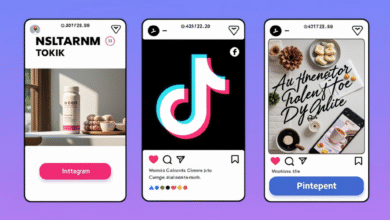Uncover the Secrets of Your Email List

▼ Summary
– Email engagement problems often stem from leadership decisions about audience targeting rather than execution by email teams.
– When unsubscribe rates are high relative to click rates, it signals negative engagement outweighing positive engagement.
– Sending sales-focused emails to audiences who have already completed their customer journey creates irrelevance and disengagement.
– Better approaches include shifting messaging to value-based content or targeting only fresh leads who haven’t completed sales cycles.
– Email lists should be treated as relationships to nurture rather than resources to mine, requiring strategic alignment with audience needs.
When senior leaders notice their email campaigns underperforming, with low open rates and a steady trickle of unsubscribes, the instinct is often to question the marketing team’s execution. However, the root cause frequently lies not in how emails are sent, but in who receives them and why they’re still on the list. Understanding your audience’s current relationship with your brand is essential for turning around lackluster engagement.
Sometimes, what appears to be acceptable performance data can conceal a deeper issue. Consider a B2B financial services client whose email metrics initially seemed within normal bounds. Their unsubscribe and spam complaint rates fell within industry standards, but when compared to their extremely low click-through rates, a troubling pattern emerged. The ratio of negative actions, unsubscribes and spam reports, to positive engagement like clicks was alarmingly high. This signaled that although the list was built legitimately through website opt-ins, something was fundamentally wrong with how subscribers were being treated after they entered the sales funnel.
The website’s primary function was generating leads for the sales team, which it accomplished effectively. Every visitor who submitted their email was placed into an intensive lead-nurturing sequence, complete with sales representative outreach. Individuals either converted into clients, were classified as unqualified, or declined the offer. Regardless of the outcome, all were then added to the company’s ongoing email program. This program consisted of two monthly sends: a promotional offer segmented by industry and a general company newsletter.
The trouble started here. The service offered was something businesses might use once a year at most. Sending monthly promotional emails and sales-focused newsletters to people who had already completed their journey, whether they became customers, were rejected, or said no, felt completely out of touch. It was akin to contacting every past job applicant, including those you hired, rejected, or who declined your offer, and inviting them to reapply for the exact same role. The emails themselves weren’t poorly crafted, and the team had segmented the list. The core issue was a mismatch between the message and the audience, a strategic misstep originating from leadership.
A misaligned email program like this inevitably leads to disengagement. When the lead-nurturing journey concludes, continuing to communicate with former prospects requires a fresh approach, not a repetition of the same sales-driven content. Sticking with the original strategy only results in dwindling opens, minimal clicks, and rising unsubscribes. The problem isn’t necessarily poor content or excessive frequency, it’s that the emails offer no value or relevance to the recipients.
Fortunately, there are more effective and respectful alternatives. Brands in this situation have several strategic options to consider.
First, adjust the messaging to focus on long-term value rather than immediate sales. Shift from promotional content to educational or insightful material that keeps your brand top of mind. This way, if prospects’ circumstances change later, your company remains a viable option.
Second, change the audience receiving promotional emails. Reserve sales-heavy messages for new leads who haven’t yet gone through the full sales cycle. For existing contacts who have already engaged, create separate lists and tailor content to their specific status.
Third, redefine the role of your email program. Instead of prioritizing acquisition, focus on retention, referrals, and reviews. Current clients and past prospects can become powerful advocates if you engage them appropriately.
Finally, in some cases, the best choice may be to do nothing at all for certain segments. If no relevant, valuable content can be created, it may be better to pause email sends rather than risk further alienating subscribers.
This situation highlights a common pitfall: treating an email list as a resource to be mined rather than a community to nurture. Every message sent carries a cost, not just in time and budget, but in brand equity. Sending irrelevant emails to people who have mentally checked out doesn’t just waste resources; it damages trust and burns bridges.
Before your next email campaign review, take a step back and ask critical questions. Who is on your list? Where are they in their customer journey? Does your content reflect their current needs and relationship with your brand? If the answers are unclear, it’s time for thorough list hygiene and a strategic reassessment. Building a clean, engaged email database starts with respecting where your subscribers are, and where they’ve been.
(Source: MarTech)





